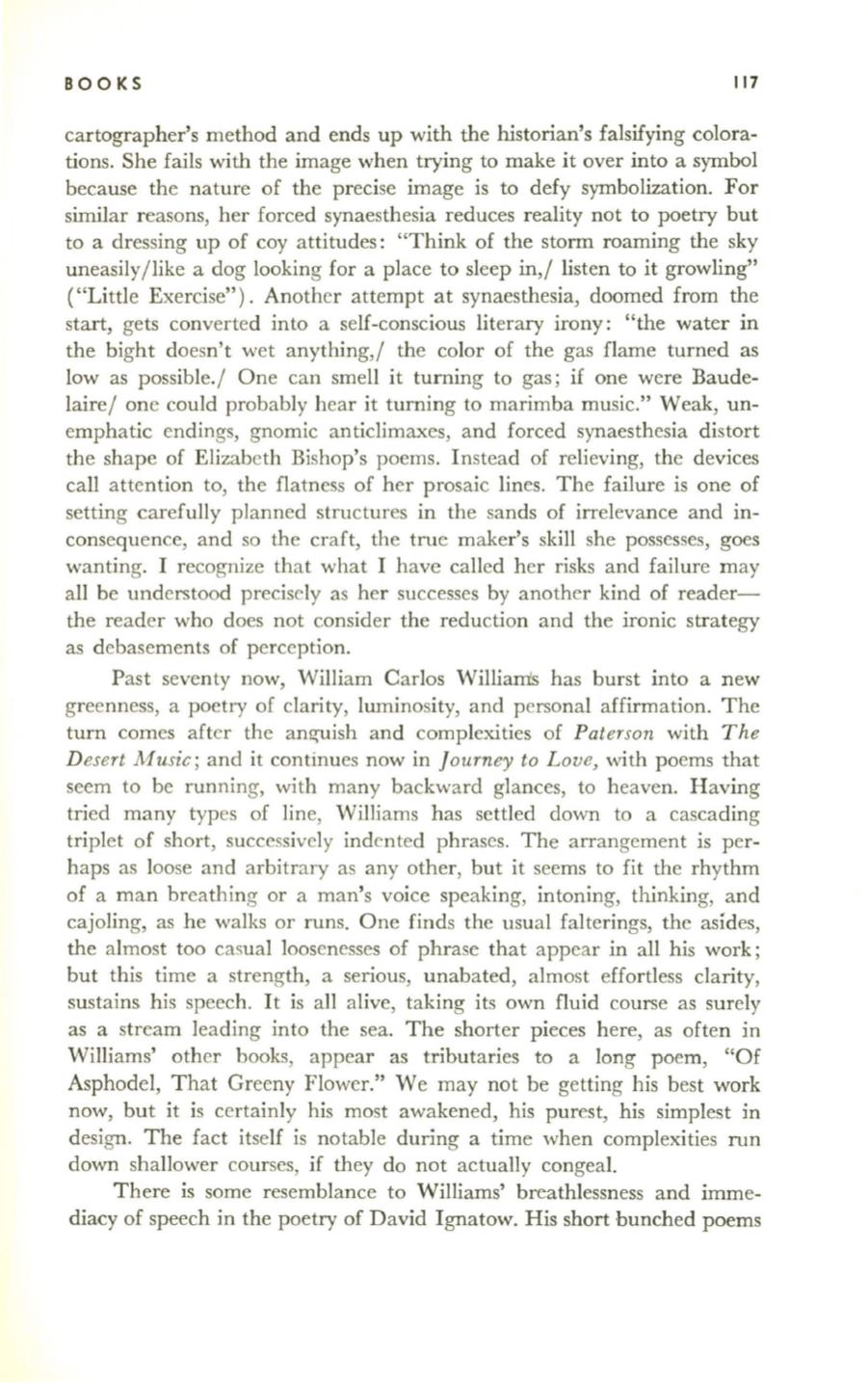
BOO KS
117
cartographer's method and ends up with the historian's falsifying colora–
tions. She fails with the image when trying to make it over into a symbol
because the nature of the precise image is to defy symbolization. For
similar reasons, her forced synaesthesia reduces reality not to poetry but
to a dressing up of coy attitudes: "Think of the storm roaming the sky
uneasily/like a dog looking for a place to sleep in,/ listen to it growling"
("Little Exercise"). Another attempt at synaesthesia, doomed from the
start, gets converted into a self-conscious literary irony: "the water in
the bight doesn't wet anything,! the color of the gas flame turned as
low as possible./ One can smell it turning to gas; if one were Baude–
laire/ one could probably hear it turning to marimba music." Weak, un–
emphatic endings, gnomic anticlimaxes, and forced synaesthesia distort
the shape of Elizabeth Bishop's poems. Instead of relieving, the devices
call attention to, the flatness of her prosaic lines. The failure is one of
setting carefully planned structures in the sands of irrelevance and in–
consequence, and so the craft, the true maker's skill she possesses, goes
wanting. I recognize that what I have called her risks and failure may
all be understood precisely as her successes by another kind of reader–
the reader who does not consider the reduction and the ironic strategy
as debasements of perception.
Past seventy now, William Carlos Williams has burst into a new
greenness, a poetry of clarity, luminosity, and personal affirmation. The
turn comes after the anguish and complexities of
Paterson
with
The
Desert Music;
and it continues now in
Journey to Love,
with poems that
seem to be running, with many backward glances, to heaven. Having
tried many types of line, Williams has settled down to a cascading
triplet of short, successively indcnted phrases. The arrangement is per–
haps as loose and arbitrary as any other, but it seems to fit the rhythm
of a man breathing or a man's voice speaking, intoning, thinking, and
cajoling, as he walks or runs. One finds the usual falterings, the asides,
the almost too casual loosenesses of phrase that appear in all his work;
but this time a strength, a serious, unabated, almost effortless clarity,
sustains his speech. It is all alive, taking its own fluid course as surely
as a stream leading into the sea. The shorter pieces here, as often in
Williams' other books, appear as tributaries to a long poem, "Of
Asphodel, That Greeny Flower." We may not be getting his best work
now, but it is certainly his most awakened, his purest, his simplest in
design. The fact itself is notable during a time when complexities run
down shallower courses, if they do not actually congeal.
There is some resemblance to Williams' breathlessness and imme–
diacy of speech in the poetry of David Ignatow. His short bunched poems


